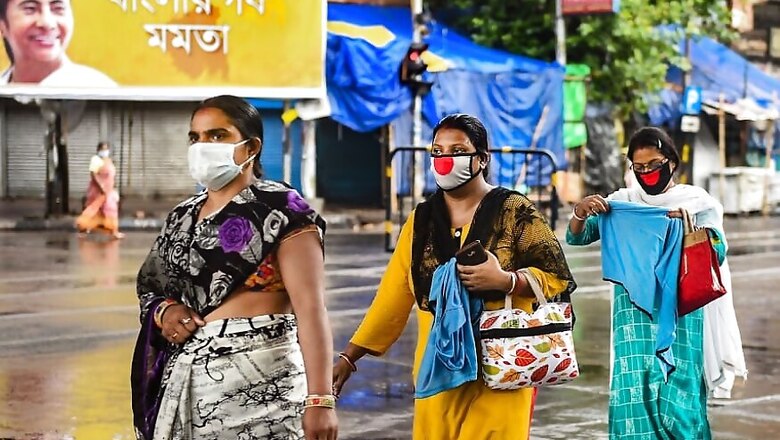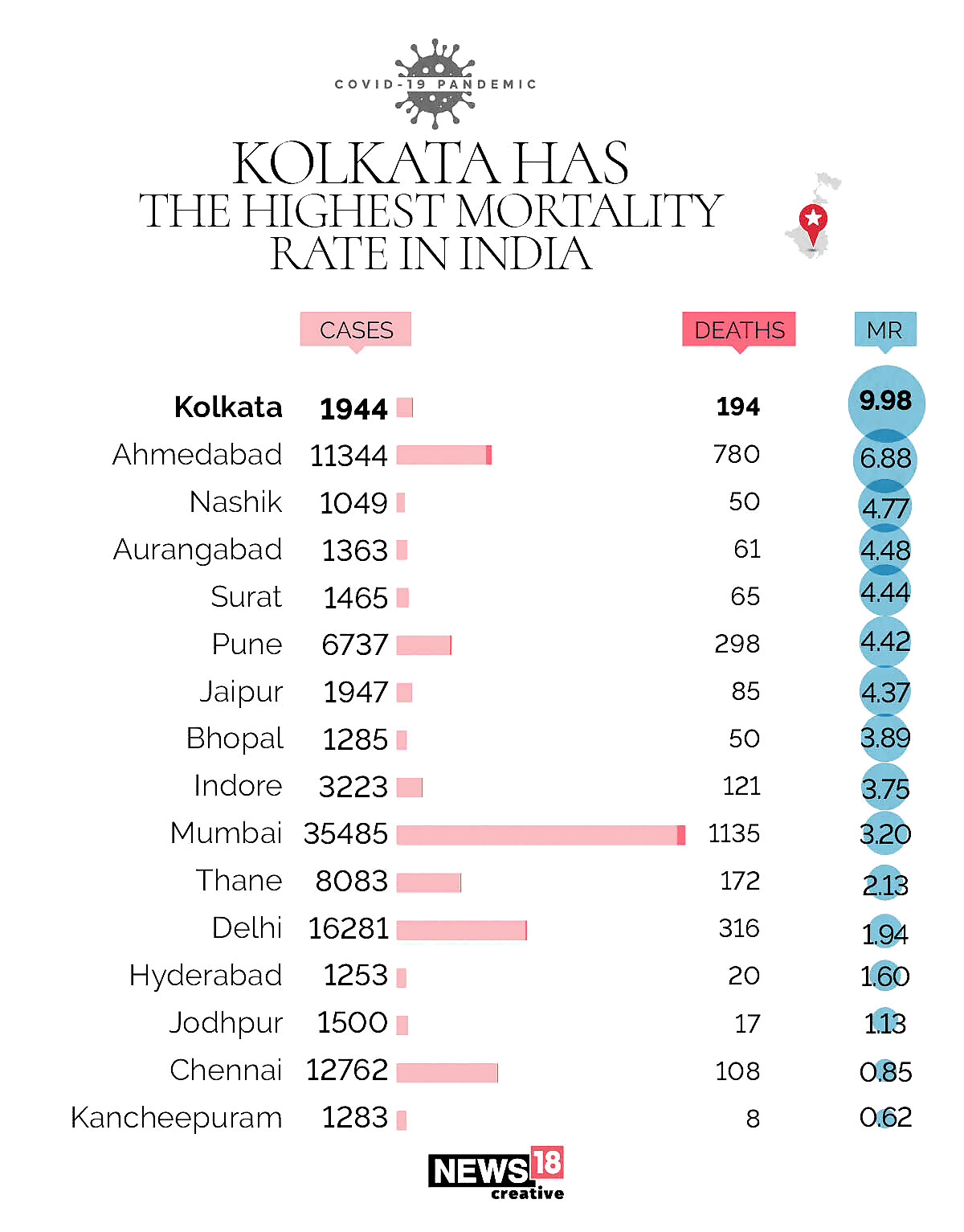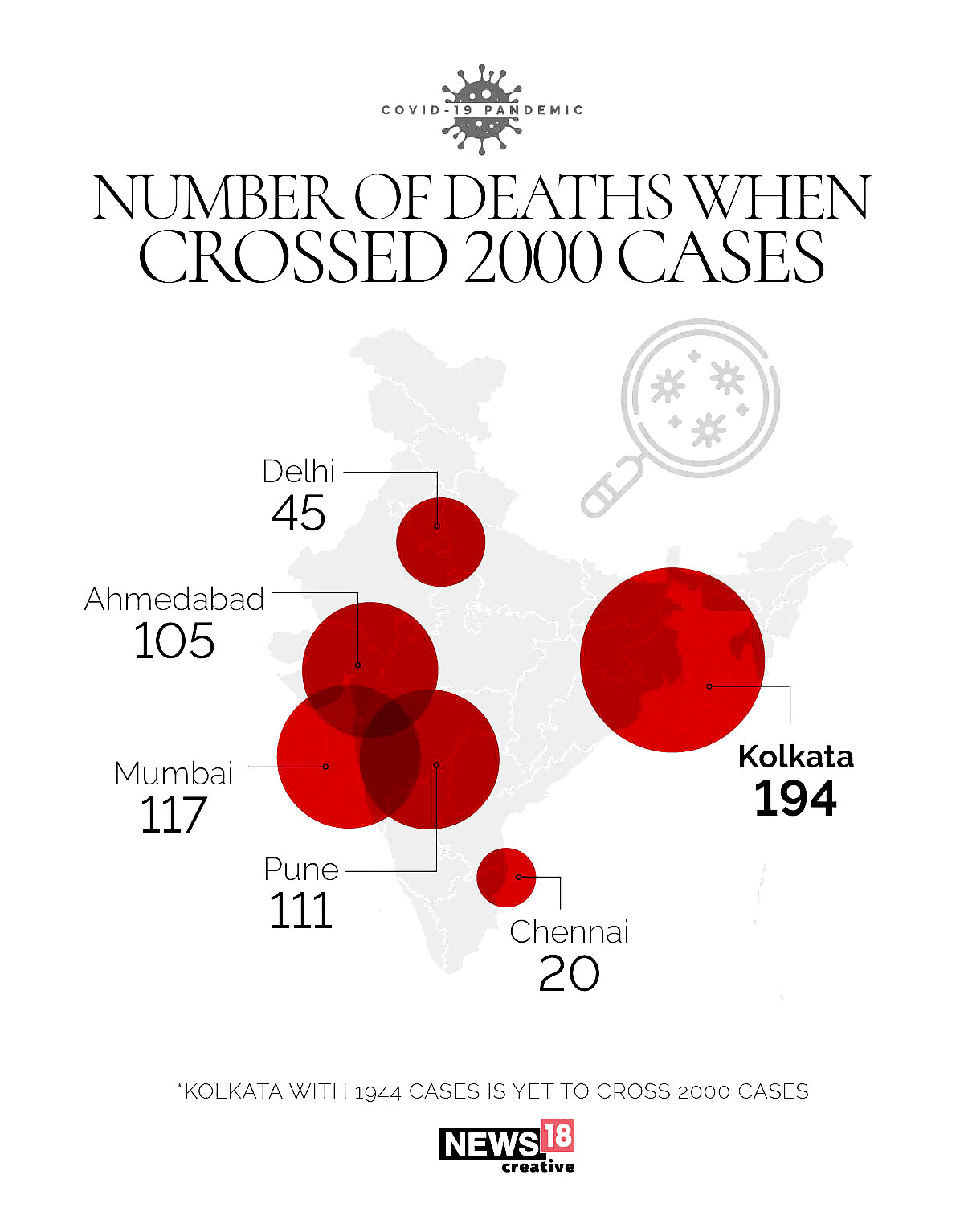
views
While Mumbai, Delhi, Chennai and Ahmedabad have been making the Covid-19 headlines every day, the situation in India’s third-most populous city has largely gone unnoticed.
Kolkata has curiously reported just 1,944 cases but has as many as 194 Covid-19 deaths. Amongst the 16 cities which have recorded 1,000-plus cases in India, Kolkata has the highest Mortality Rate of a shocking 9.98 per cent. This is almost three and a half times higher than the National Mortality Rate of 2.87 per cent.

Yes, a high number of deaths in a low sample of cases will imply a high mortality rate. This has been the explanation given by the state authorities in West Bengal. They also suggested that the state had only tested critical patients initially, leading to a high mortality rate.
“When the number of tests conducted was less and only acute cases could be tested, the mortality rate was appearing to be high. The mortality rate was appearing high not because West Bengal was failing but because the infrastructural availability of facilities was not present in Bengal. The more positive cases you test, the lesser will be the mortality rate,” stated Alapan Bandyopadhyaya, the West Bengal Home Secretary.
The state government blamed the Centre for not having enough testing kits initially, which meant only a few critical patients could be tested — a charge denied by The National Institute of Cholera and Enteric Diseases (NICED), a facility of the ICMR in Kolkata.
But even by the end of April, West Bengal, the fourth most populous state in India, was just testing around 148 people per million population — the lowest amongst all major states in India. This number has improved to 1,814 by May 28 but is still lower than most other major states in the country — Delhi (9129), Tamil Nadu (5740), Rajasthan (4353), Gujarat (2915), Maharashtra (3434) and Karnataka (3586) — have tested more.
What is worrying for West Bengal is that though the Mortality Rate has come down with an increase in the number of tests, at 6.5 per cent, it is still the highest in the country. Even more disturbingly, Kolkata accounts for 194 of the total 289 deaths in the state – that is, a little more than two-thirds (67.13 per cent) of the total deaths in the state. When you combine that with the city’s Mortality Rate of 9.98 per cent the situation becomes alarming!
There are also reports of under-reporting and data mismanagement in West Bengal. The Inter Ministerial Central Teams (IMCTs) which visited West Bengal at the beginning of the month raised questions about the transparency of the state in reporting cases and deaths and was critical of its extremely high mortality rate of 12.8 per cent. Ministry of Home Affairs, Secretary, Ajay Bhalla said, "This is reflection of poor surveillance, detection and testing in the state. There is also need to increase random testing in crowded clusters".
The West Bengal government, on its part, blamed the Centre for targeting the state and was unhappy with the visit of the teams.
Comparatively, it would be interesting to see the number of deaths reported from big Indian cities when they had a similar case load as Kolkata.

Kolkata has a significantly higher number of Covid-19 fatalities compared to other major Indian cities when they crossed 2,000 cases. It re-emphasises the failure of the administration to control the number of deaths in the city.
There are many possible reasons for the high mortality rate of the city and the state — overcrowding in bazaars, people violating lockdown protocol and bathing in rivers and playing cricket and football, relaxation in certain lockdown restrictions by the West Bengal government allowing sweet shops and flower markets to remain open.
According to some experts, social stigma is another major cause for the high mortality in Kolkata. People are reluctant to report symptoms as they fear being shamed in the society. By the time their condition worsens and they are compelled to report, it gets too late.
Overcrowding at district hospitals and over dependency on government health centres, which did not have the necessary infrastructure to deal with a large number of critical patients, also led to an increase in the mortality numbers.
However, even as the Mortality Rate remains high, there is a silver lining for West Bengal – their Deaths/Tests Ratio of 0.16 per cent is just slightly worse off than the national average of 0.14 per cent. In other words, West Bengal conducts 608 tests for every Covid-19 death whereas the national average is 723 tests per death. The corresponding number for Karnataka is 5,140, followed by Tamil Nadu (2,956), Rajasthan (2,061), Delhi (696), Madhya Pradesh (471), Maharashtra (211) and Gujarat (206).
Also, West Bengal has a low Positivity Rate (Cases/Tests as a Percentage). As on May 28, the state had a Positivity Rate (PR) of just 2.58 per cent which is lower than the national average of 4.85 per cent and much better than most other major states in India. Maharashtra has a PR of 14.2 per cent, Gujarat has 7.86 per cent, Tamil Nadu has 4.26 per cent, Delhi is at 8.48 per cent and Uttar Pradesh has 2.79 per cent. This means the state is testing more per positive case as compared with other states.
A comparison of Kolkata with Ahmedabad tells us that while both the cities have a high mortality rate despite low testing, the Tests/Death ratio and the Positivity Ratio of West Bengal is three times better than that of Gujarat.
Overall, two conclusions can be drawn from these numbers. Firstly, Kolkata was not able to control the number of deceased initially, leading to a very high mortality rate. Secondly, as Kolkata tests more, a rise in cases will put pressure on the already burdened health infrastructure of the city leading to a substantial rise in the aggregate deaths but a large number of asymptomatic or mild cases would also bring the mortality rate down.
That should bring some relief to the City of Joy!




















Comments
0 comment